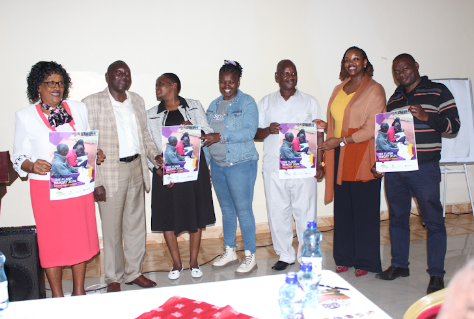A recent report highlights that approximately 23% of Grade 6 students in Central Kenya cannot read a Grade 3-level English story with comprehension. Additionally, only 77.4% of Grade 4 students are able to solve a Grade 3-level division problem, with urban students outperforming their rural counterparts.
The Foundational Literacy and Numeracy Assessment 2024 report, released by Usawa Agenda, reveals that while school enrollment rates are high, many children are not receiving quality education. The data was collected between June and July last year in Murang’a, Kiambu, Nyeri, Kirinyaga, and Nyandarua counties.
The report was launched in Murang’a County by acting regional commissioner Thomas Nyoro. Emmanuel Manyasa, who directed the study, worked with 51 organizations and deployed 1,996 volunteers and 1,953 village elders to cover 1,996 enumeration areas.
The team visited 38,634 homes and assessed 39,298 children aged six to fifteen. They also evaluated 1,813 public and private primary schools, examining their facilities, personnel, leadership, and performance in the 2022 KCPE.
“Many students completing primary education are still unable to read basic text,” Manyasa noted.
The report also indicates that children with disabilities in urban areas are 15 times more likely to have never enrolled in school. It highlights a gender disparity in primary school management positions, with only 18.4% of board chairpersons being women.
School enrollment rates are higher in urban areas (95.6%) compared to rural areas (94.5%), exceeding the national average of 90%. Girls have a slightly higher enrollment rate at 95.3%, compared to 95% for boys, except in Kirinyaga County, where boys’ enrollment is 95% compared to 93% for girls. Kiambu County had the highest enrollment rates, with 96.2% of girls and 95.6% of boys enrolled.
Nationally, 9% of school-aged children are out of school, with 4.6% having never enrolled and 4.4% having dropped out.
“In the Central region, 4.9% of school-aged children are out of school, with 1.3% having never enrolled and 3.6% having dropped out,” the report states.
Nyeri County reported the highest rate of school-aged children not in school at 6.1%, while Kirinyaga had the highest dropout rate at 4.9%, slightly above the national average. Nyeri also had the highest percentage of pre-school-age boys out of school at 15.4%, while Kirinyaga had the highest percentage of girls out of school at 15%.
Nyandarua County had the highest percentage of primary school children not in school at 6.4% and the lowest percentage of pre-school-age children out of school at 2.7%. In Murang’a, 9.1% of boys and 10.7% of girls aged between four and 15 years were out of school.
Approximately 53% of boys were enrolled in Early Childhood Development Education (ECDE), compared to 46.6% of girls. Kiambu recorded the highest enrollment in private facilities at 60%, surpassing the national average of 40.5%.
“On the day of the visit, the region had a slightly lower absenteeism rate of 14% compared to the national rate of 14.2%. Kiambu had the highest absenteeism rate at 20.5%,” the report notes. About 45.6% of the absent students were sent home for school fees.
The pupil-to-teacher ratio in primary schools in the region was 39:1, and in pre-schools, it was 25:1, both within Kenya’s recommended ratios. However, Kiambu had the highest ratio at 57:1, while Kirinyaga had the lowest at 27:1.
The report indicates that 36.7% of girls were reported pregnant in the year leading up to the survey, with 57.7% of these cases occurring in Kiambu County and only 7.1% in Nyandarua. None of the pregnant girls in Nyandarua returned to school, while Kiambu had the highest return-to-school rate at 46.4%.
In Kirinyaga County, 80% of school heads identified counseling as a crucial service provided to pregnant girls, whereas none of the headteachers interviewed in Nyandarua mentioned readmitting the girls to school. About 44.5% of schools cited stigma as the primary challenge for pregnant girls and teen mothers, while 14.6% pointed to a lack of support from the school community.
Only 6.4 per cent of schools in Kirinyaga had a library compared to 51.7 per cent in Nyeri county and only Murang’a schools reported incidents of learners sitting on the floor.
Nyeri county had 65.5 per cent of schools implementing a feeding programme with Kiambu coming second with 62.4 per cent while Nyandarua lagged with 43.1 per cent.
In Nyeri, 31 pupils shared one toilet as compared to 72 in Kiambu.
About 65.6 percent of parents in the region did not like the CBC due to the high-cost purchases of learning materials compared to 69.1 per cent nationally.
“Nyeri county leads the way with the highest number of parents opposed to the cost of learning materials at 72.9 per cent.”



